A forensic accountants’ back to basics approach
 Since the earliest days of my forensic accounting career, I’ve always thought of forensic accountants as operating at the intersection of the law, accounting, technology and mathematics.
Since the earliest days of my forensic accounting career, I’ve always thought of forensic accountants as operating at the intersection of the law, accounting, technology and mathematics.
I see this as a unique approach as it opens ones thinking to the idea that the solution to one particular problem may use more of one particular discipline than another. Another problem will rely on a greater percentage of another discipline. Over and over again, I see that this approach opens up solutions that would never have been possible had the forensic accounting practitioner simply relied on their background in accounting.
In a previous matter, I was involved in a family law property settlement dispute and mid-way through the first day of the final hearing I recalled the above principle. I was spending hour upon hour watch the two opposing barristers make back and forth settlement proposals, however I could see that these proposals if they were going to be successful would be more likely down to luck than any “system” or methodology. Another way of putting this was that I knew that in mathematical terms each side had a range of scenarios that they would accept and a range that they wouldn’t accept. Each “line” of solutions could in effect be plotted on a graph. The intersection of these lines would result in a negotiated settlement.
So with pen and paper, I sat down outside the Court and tried as best I could to convert houses, cars, superannuation, businesses, and various other assets into a mathematical form and then try and see whether I could force a solution.
This approach and re-defining the problem immediately changed my viewpoint and also the viewpoint of my client. It was as if we put down our career and personal bias for a moment and looked for a solution with a different viewpoint. Moments later, I revealed an anomaly in my clients thinking that made sense from a personal point of view but didn’t make sense from a mathematical point of view. It was at this stage that I was quietly confident that clear, precise, and mathematical thinking would find a solution that the divorce lawyers would take much longer to get to.
I then realized that to make progress I would need to make a couple of simplifying assumptions. This is a technique that I use in other forensic accounting engagements. Once a solution has been found, any simplifying assumptions can be relaxed and the solution can be recalculated without these constraints. So the first simplifying assumption was that my clients’ former partner would need to keep the business in the property settlement for there to be any chance of agreement. I could see that from the opposing sides point of view this was absolute. My client, whilst happy to take the business could also have quite as happily forgone its ownership. This may appear to be obvious reading this post, but it was far from clear leading up to this point.
The next major asset was the house and the mortgage over the house. My client for a variety of personal and financial reasons (which were completely logical) to keep the home and mortgage. So by this stage, my analysis tentatively proposed one partner keeping the business and the other keeping the home and mortgage. There was also a personal loan mixed up in the marital assets that was used to finance the business. So given this connection, I assumed that these naturally “went together”. I put this loan on my clients’ ex-partners side of the property settlement ledger.
At this stage, I felt that I was making progress and I wondered if it was this simple, why hadn’t a settlement been reached in the previous two years? I reviewed some of the other associated issues and at this point I realised that one of my clients nonnegotiable items was inconsistent with a related but different part of the case. This had been a key stumbling block to reaching earlier agreement. Again, I thought of the item from a logical position, I realised that even if my client pursued this angle, there was a fairly strong likelihood that my client wouldn’t financially benefit from it.
Once I got this clarity in my own mind I was able to “translate” this thinking into a simple statement for my client. We needed to drop that item from our proposal as it was preventing a property settlement from being made, it was going to be a waste of legal fees and in the end it was quite possible not to have resulted in additional funds to my client. So now that I had sorted out that logic, I came back to the draft proposal.
To recap, one side had the businesses and a loan that related to the business and the other party had the house and the mortgage. I then worked out what in my own mind was a logical division of the assets in percentage terms. This was based on assets and liabilities at the beginning of cohabitation and the various contributions throughout the relationship. It’s important to note that this was based on my own analysis and didn’t refer to either what the divorce lawyers and counsel were thinking or any other factor. Looking at the assets and liabilities, I thought that there appeared to be greater risk on the part of the other side in terms of the type of assets and liabilities that they had. For this and a number of other reasons, I thought it would be equitable to split the pool 60:40 in favour of the other side. I didn’t share this thinking with the client or anybody else, as I reasoned that it was better to present the proposal in totality. These numbers were required so that I could calculate which remaining assets and liabilities needed to be allocated to each side of the property settlement.
I then starting with the next biggest asset and slotted this into one column. A number of other assets were slotted into the other column, so that the totals approximated the 60:40 assumption I made based on the net marital asset position. I now had a draft proposal that was grounded in logic (including a number of rough assumptions). Around 4 hours later, I got a call to say that agreement had been reached and the division of assets was largely the same as the above proposal, with some small variations and a couple of assets that I had excluded due to their relatively small size.
For me it was satisfying to be part of this process where agreement was reached. I believe it is safe to say that basic maths and logic played a part in the overall solution. It also makes we wonder how many other disputes are battled out in expensive litigation when there may be a simple way of getting to that magical intersection?
Drunken fall headed for high court
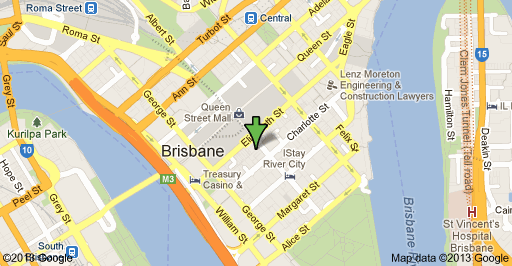 A woman who fell through a glass panel in the foyer of a Brisbane office building while intoxicated intends to take her $179,000 damages claim to the High Court.
A woman who fell through a glass panel in the foyer of a Brisbane office building while intoxicated intends to take her $179,000 damages claim to the High Court.
Jodie Smith suffered severe cuts to her face, neck, arms and torso after she stumbled and fell through a glass panel on the ground floor of the 138 Albert Street office building on December 21, 2001.
She had been returning to the building with colleagues about 8.30pm.
In the hours before the incident, Ms Smith, then 29, had consumed about 10 glasses of white wine at her office Christmas party, and at least six glasses of pre-mixed spirits at a nightclub.
Her blood alcohol level was about 0.26 per cent at the time and she was unsteady on her feet.
As she was looking in her handbag for her entrance swipe card, Ms Smith stumbled backwards into the glass panel, which broke into large shards.
Those who witnessed the fall said they were surprised the glass panel broke. It did not seem as though Ms Smith fell heavily, they said.
Ms Smith was left with scarring on her body and face and suffered psychological difficulties as a result.
She sued the building’s body corporate in Brisbane’s District Court and was awarded $15,000 for loss of future earning capacity.
Not satisfied, Ms Smith took her case to the Court of Appeal, saying the judge should not have found she “negligently contributed” to the incident.
Ms Smith was also unsuccessful in the Court of Appeal and has since lodged an application to have her case heard in the High Court.
The panel was made of six-millimetre thick glass which complied with workplace health and safety standards when the building was constructed in 1971.
But the body corporate had failed to do a proper safety audit that would have found the glass was no longer compliant in 2001.
“The pedestrian traffic flow in and out of the entrance way and foyer was about 4500 to 5000 people per week and students often milled around it,” Court of Appeal president Justice Margaret McMurdo said.
“In those circumstances it should have appreciated that there was a real risk of someone falling into or being pushed against the glass wall, breaking it and being seriously injured, perhaps even fatally.”
However, Ms McMurdo concluded Ms Smith should take some responsibility for compromising her own safety through “voluntary, gross intoxication”.
Ms Smith lodged a special leave application in the High Court on Tuesday.
(Source: Marissa Calligeros, Brisbane Times, 9 May 2013)
Blitz on suspect compensation claims
Federal public servants seeking workers’ compensation payouts face the biggest crackdown in decades.
A federal government review of the $1.2 billion Comcare insurance scheme has urged sweeping reform to reduce the number of dubious claims for psychological injuries, payouts for dodgy therapies, doctor shopping and outright fraud.
The review has made more than 147 recommendations to rewrite the legislation on Commonwealth public sector compensation claims, with the aim of getting injured bureaucrats back to work and ending their “passive” reliance on compensation.
The taxpayer-funded insurer lost more than $500 million in the 2011-2012 financial year as the number of claims for psychological injuries in the public sector – many related to accusations of bullying and harassment – increased.
According to the review’s two reports by Melbourne barrister Peter Hanks, QC, and former Defence Department boss Allan Hawke, the “long tail” of the Comcare scheme means an individual claim can exceed $2 million.
The review, ordered last year by Workplace Relations Minister Bill Shorten, cited a case of taxpayers paying nearly $30,000 for massage therapy that had “no curative effect” and another of a bureaucrat in Brisbane who was flown to a Buddhist meditation retreat in Alice Springs to treat his anxiety disorder.
The reports do not call for cuts to benefits for injured workers but urge a shift from a payout-oriented scheme to one that emphasises rehabilitation and a return to work.
The report says claims for psychological injuries have increased by 30 per cent in the past three years and are four times higher in the federal public service than for other employers.
Mr Hanks says compensation for these claims should not be paid for more than three months without a diagnosis by a properly qualified medical practitioner.
The senior barrister also wants an end to payouts for mental stress caused by imaginary factors.
“It is an unfair burden on employers to make them liable to pay compensation for a psychological injury that is caused by an employee’s fantasising rather than by any aspect of employment,” he wrote.
Among the recommendations is a no-fault, provisional liability that would cover injured workers for a three-month rehabilitation period and a shift in jurisdictions for workplace dispute resolution from the Administrative Appeals Tribunal to Fair Work Australia.
Mr Hanks wrote that Comcare’s legislative framework, the the Safety Rehabilitation and Compensation Act, was supposed to be beneficial to workers but the insurer had a duty to spend taxpayers’ money wisely.
He urged greater vigilance on doctors who supported compensation payouts, saying health practitioners should be ”held accountable for their conduct”, so ”they do not exploit what is, in effect, a publicly funded scheme by overcharging, overservicing or providing services that do not meet basic professional standards”.
Mr Shorten said he would consult ”stakeholders” about the reports.
“It is vital that the Comcare scheme is focused on early and effective intervention to promote recovery of injured workers. It is also critical that employers and Comcare are pro-active in supporting injured workers from the point of injury, during rehabilitation and when they return to work,” he said.
Recent cases
- Commonwealth public servant compensated, after a court appeal, for injuries sustained during a “vigorous” sex session in a motel room on a work trip.
- Underperforming Canberra public servant compensated after she claimed one-on-one counselling sessions constituted bullying.
- A public servant in Brisbane was flown to Alice Springs for a Buddhist meditation retreat to treat his anxiety disorder.
- Canberra government worker paid $29,000 for massage treatment that had “no curative effect’’.
(Source: Noel Towell, SMH, 30 March 2013)
AusAid investigating 178 active fraud investigations
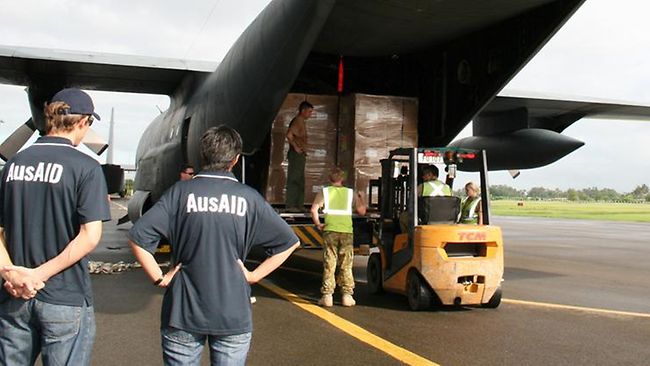 AUSTRALIA’S $5.2 billion foreign aid program has been hit by corruption claims involving a flagship project in Afghanistan, while a forestry deal in Papua New Guinea has triggered a diplomatic rift.
AUSTRALIA’S $5.2 billion foreign aid program has been hit by corruption claims involving a flagship project in Afghanistan, while a forestry deal in Papua New Guinea has triggered a diplomatic rift.
AusAID has confirmed an investigation is under way into allegations that education scholarships, known as Australia Awards, were being on-sold for profit by corrupt officials in Afghanistan.
AusAID said GRM International, which had managed the program, was conducting an independent investigation after losing the $80 million contract when the allegations were raised in August.
However the new manager, US firm International Relief and Development, is itself subject to a fraud claim involving US aid.
AusAID boss Peter Baxter said he had expressed “strong concern” to the head of IRD that AusAID was not told about that allegation. He said the level of fraud activity had halved across its programs but it was investigating 178 “active” allegations.
Meanwhile, concerns have been raised that hundreds of millions of dollars are being wasted on useless climate change programs.
In one case Papua New Guinea’s Forestry Minister Patrick Pruaitch wrote to his Australian counterpart Senator Joe Ludwig to complain that PNG was not consulted before Australia engaged US-based environmental organisation The Nature Conservancy to help deliver a $6 million sustainable forestry program.
The PNG government said the decision could have “serious ramifications” for the livelihoods of local communities.
“We are not happy with the manner in which the project has been formulated,” Mr Pruaitch wrote on January 18. “Consultation and needs analysis have not been undertaken to capture the requirements of the (PNG) government.”
It comes after opposition whip Warren Entsch blamed AusAID cutbacks in PNG health funding for a rise in tuberculosis cases, which had spread to Australia. The Coalition has said it would redirect aid funding to Australia’s East Asian and Pacific neighbours.
(Source: Steve Lewis and Lisa Cornish, News, 11 March 2013)
Workers compensation payments for ‘mental stress’ increase among public servants
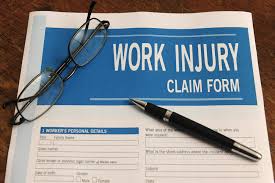 Public servants have been paid workers’ compensation for “dirty looks” and a coffee-shop quarrel, as bullied bureaucrats pocket an average of $251,000 for mental stress.
Public servants have been paid workers’ compensation for “dirty looks” and a coffee-shop quarrel, as bullied bureaucrats pocket an average of $251,000 for mental stress.
Government insurer Comcare has been forced to pay compo to more than a dozen public servants who won court appeals in the past year.
They include a Tax Office data analyst compensated for “psychological injury” after fighting with a colleague over who should drink a cup of coffee.
An Austrade auditor won stress workers compensation after her manager told her that clients had trouble comprehending her poor English.
And a Centrelink staffer who confessed she could not deal with 70 per cent of public inquiries was compensated for “adjustment disorder”, after she complained of clients’ abuse and colleagues’ “dirty looks”.
Mental stress now accounts for at least one in every 10 compensation claims across the public service, with payouts averaging $251,000.
It also makes up a third of Comcare’s payout costs. Comcare’s latest statistical report reveals 44 per cent of stress claims relate to harassment or bullying, while 34 per cent of claimants cite “work pressure”.
The number and cost of claims has caused a $9.5m blowout in workers’ compensation premiums across 34 federal government agencies, official statistics provided to a Senate estimates committee reveal.
The cost to taxpayers of insuring against injury, bullying and stress claims has soared nearly $100m – or 50 per cent – in the past five years.
Comcare will charge agencies $291m in premiums this year.The Tax Office will pay $36m – even more than the Federal Police ($31m) or the Defence Department ($29m), where in-the-field jobs are inherently dangerous.
The Department of Human Services – which includes Centrelink, Medicare and the Child Support Agency – will pay the highest premium, of $61m this year.
It has been hit with a $2.6m penalty payment this year, due to the number and size of workers compensation claims. In total, 34 departments and agencies – including national broadcaster the ABC, corporate regulator ASIC, the Commonwealth Ombudsman and even Comcare itself – have been penalised a total of $9.5m this financial year.
The cost to taxpayers has been offset by savings from 44 other agencies, which together were granted a $10m reduction in premium payments as a reward for reducing their workers compensation claims.Workplace Relations Minister Bill Shorten has ordered a review of the snowballing Comcare scheme.
The “no fault” scheme means injured workers do not have to prove negligence.
Injured staff can be paid their full salary for 45 weeks, then up to 75 per cent until the age of 65 – on top of a lump sum of up to $168,000 for permanent disability.
Comcare is seeking leave to appeal in the High Court against a recent Federal Court order that it compensate a public servant hurt when a light fitting fell on her during sex with an acquaintance in her motel room during a business trip.
CASE STUDIES
* A Tax Office data analyst was punched in the arm when he flicked coffee over a workmate’s face and shirt in a cafe.
Months later, he claimed the punch had caused a whiplash neck injury.
The Administrative Appeals Tribunal ruled the coffee-shop biff was not work-related – but still awarded compo for “psychological injury”, due to the man’s perception that colleagues were “ganging up” on him at work
.* An Austrade grants auditor was paid compensation for “adjustment disorder” and “depressed mood”. She complained after a manager told her that grant applicants where having difficulty understanding her, given that English was “not her first or second language”.
* A frontline Centrelink staffer was compensated for “adjustment disorder” after management told her she must work more than one day a week. The woman claimed she was unable to deal with 70 per cent of enquiries, that customers often became agitated or abusive while waiting to be served, and that her team leaders often gave her “dirty looks”.
Comcare blamed the woman’s stress on her personal life, but the AAT ruled the job had contributed to the “adjustment disorder”.
* A Defence Department business manager won compensation for “anxiety arising from conflict in the workplace”.
The AAT ruled that her boss had aggravated her “adjustment disorder” in the way he investigated other staff complaints about her “belittling” manner and “micromanagement”.
* An Education Department manager was compensated for “mental injury” caused by “perceived” bullying and harassment from a colleague who “wanted to take over her domain”.
She suffered depression and wet herself during an anxiety attack in her office. The AAT ruled that changes in her work duties had triggered an “adjustment disorder”.
(Source: Natasha Bita, News, 23 February 2013)
Further Workers Compensation Information

If you require more information in relation to a workers compensation claim, audit, review or require the assistance of a workers compensation specialist, then please don’t hesitate to contact us on free call 1800 454 622. We provide our workers compensation expert advice to clients across Australia.
Inheritance dispute…Sir Peter Ustinov’s only son ‘close to bankruptcy’ after court battle
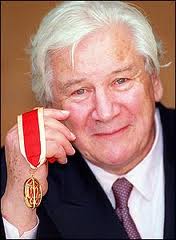
High Court judge, Mrs Justice Proudman, today said she was “appalled” by the amount of money the family had spent squabbling over the inheritance of the late great writer, actor and raconteur.
Igor Cloutier von Ustinov, 56, Sir Peter’s son by his second wife, was today hit with a £114,000 legal costs bill after failing in a bid to uncover the whereabouts of the “rights and royalties for Sir Peter’s creative works” which Igor says have been lost to his children.
Igor, a sculptor, has been battling Lady Helene Ustinov, his late father’s third wife and widow, in the Swiss courts, since 2004, seeking to reverse a ruling that Sir Peter’s last will, which he signed in 1968, should be revoked.
The proceedings in the Swiss courts are still on-going, despite a settlement on some issues in 2007, but Mr von Ustinov launched a paralell case in London designed to track down the fruits of Sir Peter’s writings and film work.
Ian Meakin, for Mr von Ustinov, argued that “overarching” lifetime trusts set up by Sir Peter had put the valuable “intellectual property rights” in his work out of reach of his widow, and put a “sizeable” slice of his assets in the hands of his children alone.
The whereabouts of those rights and royalites – which were said to have been put into a “tax efficient” offshore structure by Sir Peter decades before his death – however remain a mystery.
The barrister argued that investigations by Igor lasting two years indicated that two retired Swiss lawyers are the trustees of the alleged trusts – something which they vigorously denied.
Mr Meakin asked the judge to transfer the part of the legal row concerning the alleged trusts to the jurisdiction of the English courts.
Mrs Justice Proudman said that Sir Peter, before his death, had set up “tax efficient structures under which he could receive royalties for his creative endeavours, namely writing and acting.”
She added: “There has been protracted litigation between Mr von Ustinov and Lady Helene about Sir Peter’s estate. The question of whether the lifetime trusts are part of Sir Peter’s estate remains live in the proceedings in Switzerland.”
But, rejecting Mr von Ustinov’s claim, she said: “The allegation is that a trust must have been set up, but there is no evidence of any actual trust.
“Mr von Ustinov can’t say who are its beneficiaries and what are its terms. His claim is the most fragile claim imaginable. Nor is there any evidence of any trust governed by English law.”
Transferring part of the proceedings to the UK from Switzerland would lead to “risks of inconsistent findings and irreconcilable judgements” she concluded.
“There is no need to revert to the English courts and, accordingly, I make a declaration that this court does not have jurisdiction to try Mr von Ustinov’s claim in this action.”
Mr von Ustinov was left with a £114,000 legal costs bill after the judge she was “appalled” by the money that had been spent by the family on lawyers.
Mr von Ustinov said outside court that he had spent almost his entire fortune on the terrible battle over his father’s legacy and, having lost today, was now approaching bankruptcy.
“It’s a horrible situation,” he said.
“I was very close to my father – when he died I was holding his hand and I felt like he had asked me to put some order into his affairs, but it has been very hard.
“Now I’m close to bankruptcy and I don’t know what to do. Nine years I’ve been fighting and I didn’t inherit a penny yet.”
Saying that the battle within the family is effectively over, he added: “This action was not really against my stepmother or my sisters, it was about the fact that my father saved up money and rights for years and now they are not available to the family.
“These trusts contained the rights and royalties to everything he wrote, his film rights and everything. It’s a very sad story because the family have no way of getting hands on them.”
Tamara Ustinov Rennie, Mr von Ustinov’s half-sister, who lives with her husband in Hove, East Sussex, said outside court: “Its been a long and wearing nine years and at least this is a step towards a final solution. It’s one of those funny situations which arise in families sometimes. I can’t begin to imagine what it has cost.”
Malcolm Rennie, Mrs Ustinov Rennie’s husband, earlier said outside court: “Peter was a wonderful man and I loved him very much as a son-in-law, but being successful at such a high level as he was, everybody wanted a piece of him.”
“He was an actor, writer, raconteur and UNICEF ambassador, crisscrossing the globe daily, and, because of that, he was not able to be the present father that he would have liked to have been to his children and he tried to compensate by trying to provide his children with material things“.
He added: “I would be surprised if there is anything left in the estate – it has probably all gone to the lawyers.”
(Source: Telegraph, 24 Jan 2013)
Further Information – Forensic Accountant

If you would like further information about using our forensic accounting services for an inheritance dispute, financial investigation or other expert witness matter, then please contact us on 1800 454 622 for an obligation free discussion.
We provide services to corporations, law firms and individuals in Sydney, Brisbane, Melbourne, Adelaide, Perth and across Australia.
Power utility taken to court for teen death
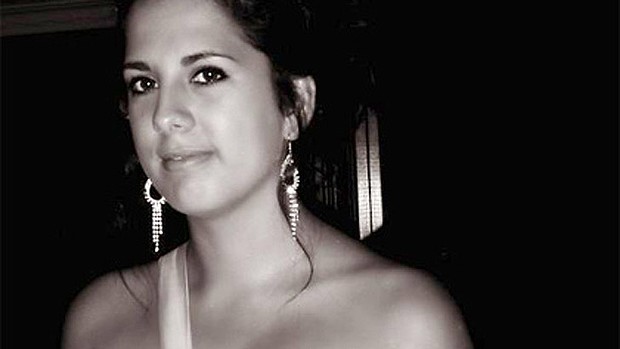
Energy provider Western Power will face court over the electric shock death of beloved Geraldton teenager Amber Finch almost two years ago.
The utility was charged under the Electricity Network Safety Regulations following an investigation by power watchdog, EnergySafety.
EnergySafety acting director Don Saunders confirmed the utility would face the Geraldton Magistrates Court in April.
He declined to comment with the matter now before the courts.
Amber Finch, 17, was walking home from a party with a group of friends when she stepped into a live wire hanging from a tree at about 2.30am on January 30, 2011.
A friend who went to her aid was also injured before being rescued by a male friend.
Speaking shortly after her step-niece’s death Tash Thornton described Amber as an “outgoing, bubbly, happy girl” who “never had a hard word to say to anyone.
“She adored her brothers,” she said. “She was someone who always helped everybody.”
Amber lived with her mother and two sisters in Geraldton while her father, who was married to Mrs Thornton’s sister, lived in Kalgoorlie with her three brothers.
(Source: Rania Spooner, SMH, 8 January 2012)
Further Information – Forensic Accountant

If you would like further information about using our forensic accounting services for a personal injury, financial investigation or other expert witness matter, then please contact us now on 1800 454 622 for an obligation free discussion.
We provide services to corporations, law firms and individuals in Sydney, Brisbane, Melbourne, Adelaide, Perth and across Australia.
MP summonsed by Australian Federal Police over fraud investigation
FORMER Speaker Peter Slipper is facing charges he misused taxpayer-funded Cabcharge vouchers, after a lengthy investigation by the Australian Federal Police.
Just weeks after sexual harassment allegations were thrown out by the Federal Court, the one-time Liberal MP will face a court in Canberra next month.
After an investigation stretching back to July, the AFP said it had served Mr Slipper with a summons “in relation to three offences of dishonestly causing a risk of a loss to the Commonwealth”.
The alleged offences involve the use of Cabcharge dockets, according to the Commonwealth Director of Public Prosecutions.
They relate to alleged breaches of the Commonwealth Criminal Code and, if proved, carry a maximum penalty of five years’ imprisonment.
Mr Slipper, who three weeks ago won a major legal victory after the Federal Court threw out sexual harassment allegations, is due to appear in the Canberra Magistrates Court on February 15.
The Opposition Leader says the latest development involving Peter Slipper exposes the Prime Minister’s lack of judgment.
After his stunning court win in December, he now faces the prospect of defending allegations that he defrauded the Commonwealth through the use of taxpayer-funded Cabcharge dockets.
Mr Slipper’s former adviser, James Ashby, alleged that he witnessed the former Speaker signing a series of blank Cabcharge dockets during trips to Sydney in early 2012.
It is not known whether the AFP legal action relates to these matters. Last night, police said it would “not be appropriate to comment further at this time“.
Mr Ashby was interviewed by the AFP shortly after he filed allegations of sexual harassment against his former boss in April.
Police spent three months investigating a series of allegations involving Mr Slipper’s use of entitlements before referring matters to the Commonwealth DPP.
In a statement, the DPP’s office said it could “confirm that the AFP have sworn an information and summons which alleges three offences against section 135.1(5) of the Criminal Code (Cth) in relation to allegations concerning the use of Cabcharges by Mr Slipper”.
The DPP said it would be “inappropriate to comment further” as the matter was before the Canberra Magistrates Court.
Mr Slipper resigned as speaker in October, after the publication of graphic and lewd text messages.
They were published as part of the sexual harassment case brought by his former staffer, Mr Ashby, which was dismissed by Justice Steven Rares who ruled it was part of a campaign to inflict political damage on the ex-speaker.
News Limited understands the Finance Department, which polices parliamentary entitlements, initially referred allegations involving Cabcharge to the AFP.
This suggests the court matters may not relate to the allegations brought forward by Mr Ashby, which involved a Sydney-based hire car driver.
The former Liberal MP, who now sits in parliament as an independent, has been forced to repay more than $20,000 in family travel and other entitlement perks over the years.
(Source: Steve Lewis, Daily Telegraph, 8 January 2013)
Card counters ace fraudsters, consumers are investigating fraud more quickly

For years scammers have been swiping ever-increasing fortunes from unsuspecting consumers.
But technology finally appears to be catching up with the fraudsters that prey on Australians with debit and credit cards.
Industry figures indicate the amount Australians are losing to card fraud has slipped this year as measures to fight overseas online swindles take effect.
According to the Australian Payments Clearing Association, fraud accounted for 15.6c in every $1000 of spending last financial year.
This was down from 16.3c for the 2011 calendar year.
While the number of fraud transactions increased slightly to 1.2 million in the year to June – up from 1.15 million in the year to last December – the total value of the transactions fell.
Fraudulent transactions totalled $284.5 million in the year to June, down from $301.6 million in the period to last December.
Fraud investigation rates peaked in the six months to last December after a spike in overseas fraudsters targeting Australian card data.
“Counter-measures have been in place for more than six months and we can see this coming through in this financial year data” association chief Chris Hamilton said. “We have actually seen a decline in card fraud in the first half of 2012.”
The figures showed cheque fraud rates continue to fall and now account for less than 1c in every $1000 paid by cheque.
Fraud on proprietary debit cards – where a PIN is required at a till – was flat at 4.9c in every $1000 worth of payments. Fraud on scheme credit, debit and charge-cards – where a signature is permitted or the card is used remotely – fell from 96c to 87.7c.
Australian Bankers Association chief executive Steven Munchenberg welcomed the trend, saying consumers were increasingly aware of the risks and banks were now quicker to respond to suspicious transactions.
(Source: Jane Harper, Herald Sun, 12 December 2012)
Further Information – Forensic Accountant

If you would like further information about using our forensic accounting services for a financial investigation or other expert witness matter, then please contact us on 1800 454 622 for an obligation free discussion.
We provide services to corporations, law firms and individuals in Sydney, Brisbane, Melbourne, Adelaide, Perth and across Australia.
Staffer who stole $250,000 from Bank gripped by ‘chronic gambling’

A former Commonwealth Bank employee who stole almost $250,000 from customers’ accounts has been described by a magistrate as intelligent and resourceful but gripped by “chronic gambling”.
Karen Myhanh Chau, 40, stole almost $250,000 from wealthy clients, including author Thomas Keneally, and transferred the funds into a personal account.
She committed the crimes between October 2010 and January of this year.
Chau pleaded guilty in August to six counts of dishonestly obtaining financial advantage by deception and in October was sentenced to 18 months’ imprisonment with a non-parole period of one year.
In Downing Centre Local court on Wednesday, Deputy Chief Magistrate Jane Mottley ruled that Chau could serve out her sentence in home detention.
“She is clearly a resourceful and intelligent woman,” Ms Mottley told the court.
“She is likely to find it difficult to get employment in the financial industry as a result of this offence.”
Chau took the money from the clients in 72 separate transactions and put some funds back into some of the victim’s accounts to indicate interest was being earned.
The Commonwealth Bank has said it had refunded all the money to the clients.
Ms Mottley said Chau had endured tough personal circumstances in the early 2000s, including a miscarriage, and this had led to depression, contributing to her gambling addiction.
She said Chau was “gripped by a chronic gambling problem” and gambling had become a coping strategy for her.
“This offence is a clear manifestation of an unresolved addiction” she said.
Chau has no prior convictions and was described as a “model citizen” during sentence submissions in October.
The court heard she has been making excellent progress at gambling counselling sessions.
Her minimum home detention period expires in October next year.
(Source: AAP, 28 November 28 2012)
Further Information – Forensic Accountant
 If you would like further information about using our forensic accounting services for a financial investigation or other expert witness matter, then please contact us for an obligation free discussion.
If you would like further information about using our forensic accounting services for a financial investigation or other expert witness matter, then please contact us for an obligation free discussion.
We provide services to corporations, law firms and individuals in Sydney, Brisbane, Melbourne, Adelaide, Perth and across Australia.
